CPS Unit Number 007-01
Camp: 7
Unit ID: 1
Operating agency: BSC
Opened: 6 1941
Closed: 11 1944
Workers
Total number of workers who worked in this camp: 407
-
 CPS Camp # 7Magnolia, Arkansas.Digital Image © 2011 Brethren Historical Library and Archives. All Rights Reserved.
CPS Camp # 7Magnolia, Arkansas.Digital Image © 2011 Brethren Historical Library and Archives. All Rights Reserved. -
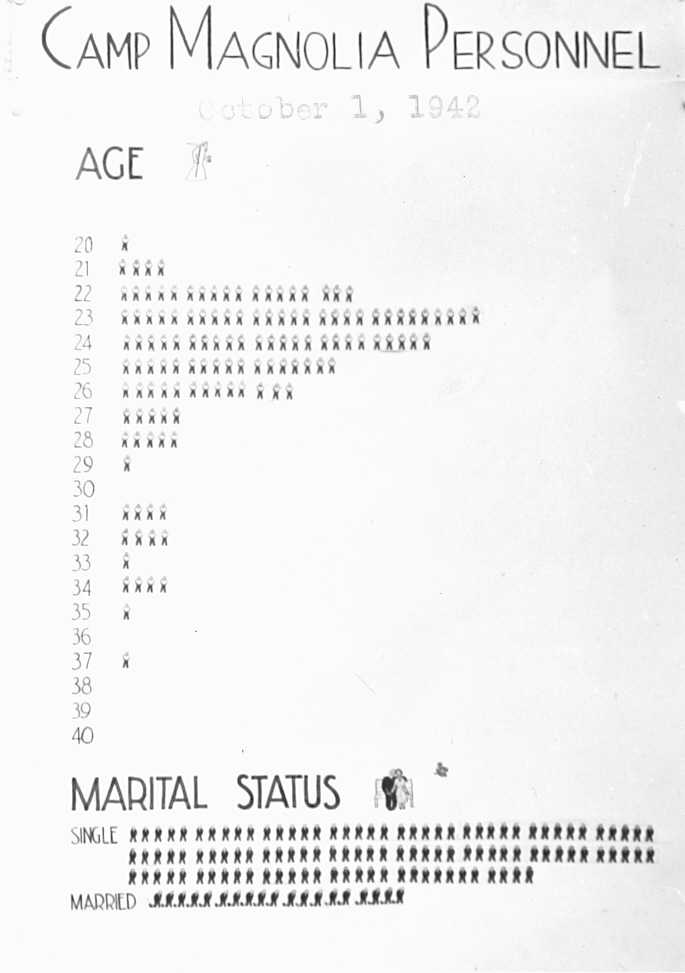 CPS Camp # 7, Magnolia, ArkansasCamp Magnolia Personnel - AgeDigital Image © 2011 Brethren Historical Library and Archives. All Rights Reserved.October 1, 1942
CPS Camp # 7, Magnolia, ArkansasCamp Magnolia Personnel - AgeDigital Image © 2011 Brethren Historical Library and Archives. All Rights Reserved.October 1, 1942 -
 CPS Camp # 7, Magnolia, ArkansasCamp Magnolia Personnel - Formal EducationDigital Image © 2011 Brethren Historical Library and Archives. All Rights Reserved.October 1, 1942
CPS Camp # 7, Magnolia, ArkansasCamp Magnolia Personnel - Formal EducationDigital Image © 2011 Brethren Historical Library and Archives. All Rights Reserved.October 1, 1942 -
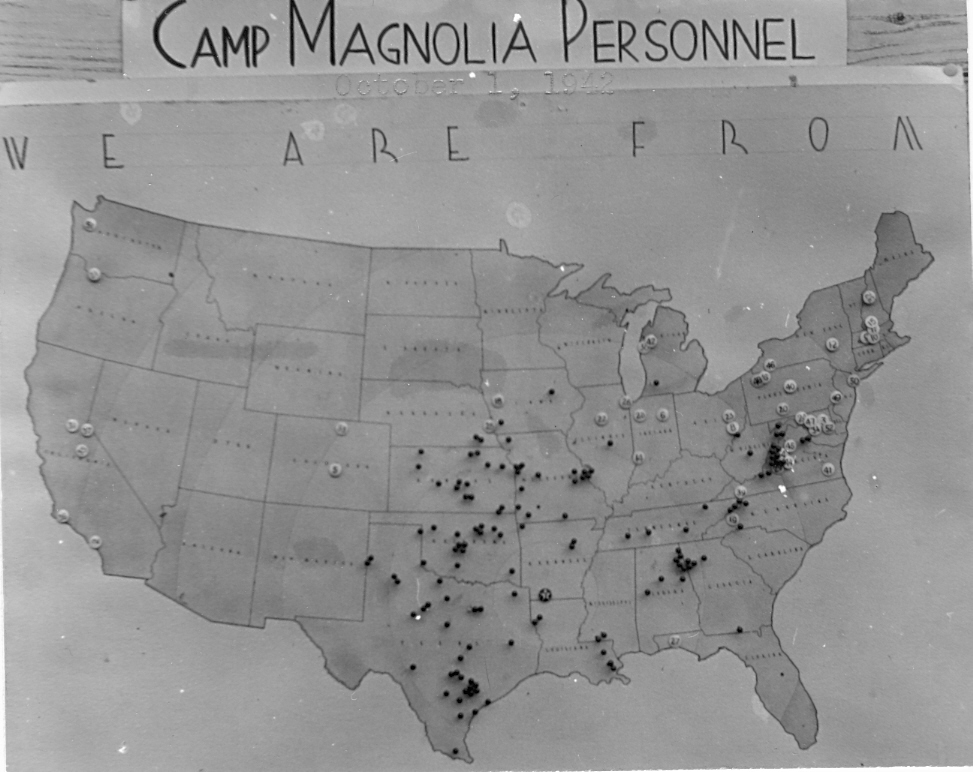 CPS Camp # 7, Magnolia, ArkansasCamp Magnolia Personnel - We Are FromDigital Image © 2011 Brethren Historical Library and Archives. All Rights Reserved.October 1, 1942
CPS Camp # 7, Magnolia, ArkansasCamp Magnolia Personnel - We Are FromDigital Image © 2011 Brethren Historical Library and Archives. All Rights Reserved.October 1, 1942 -
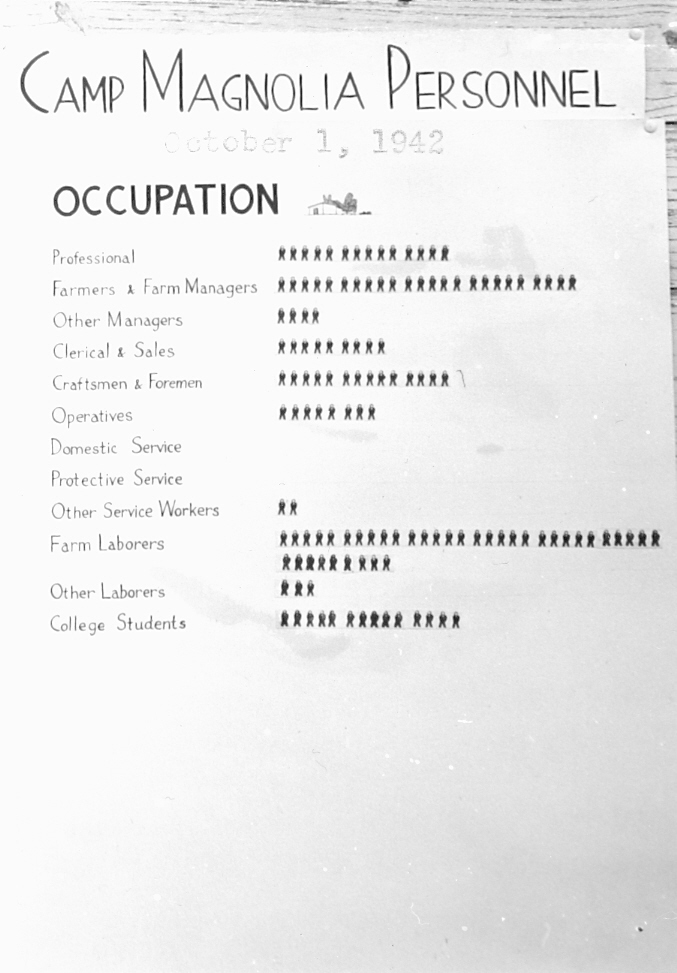 CPS Camp # 7, Magnolia, ArkansasCamp Magnolia Personnel - OccupationDigital Image © 2011 Brethren Historical Library and Archives. All Rights Reserved.October 1, 1942
CPS Camp # 7, Magnolia, ArkansasCamp Magnolia Personnel - OccupationDigital Image © 2011 Brethren Historical Library and Archives. All Rights Reserved.October 1, 1942 -
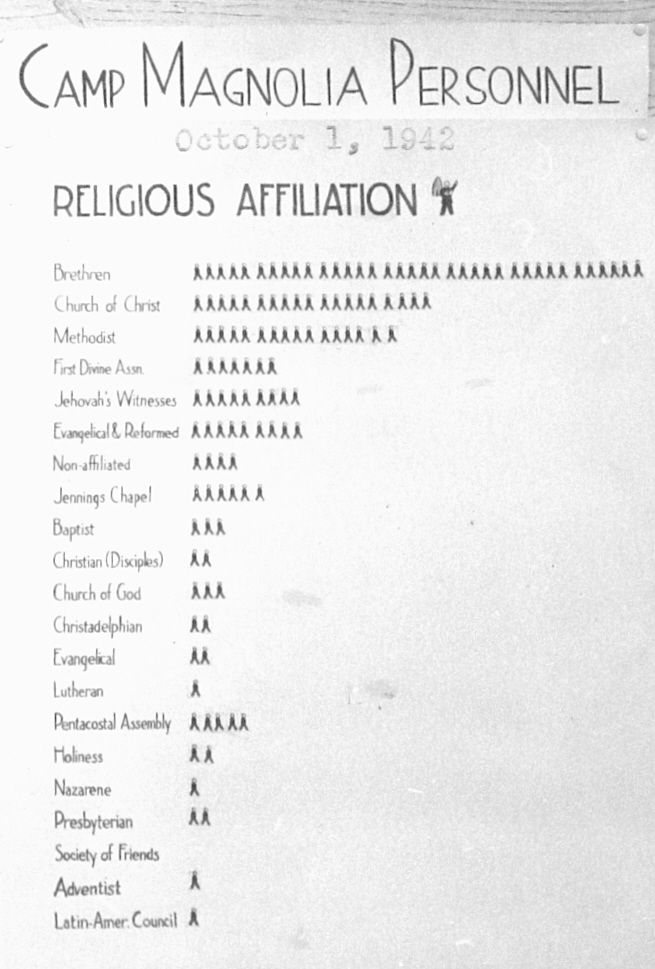 CPS Camp # 7, Magnolia, ArkansasCamp Magnolia Personnel - Religious AffiliationDigital Image © 2011 Brethren Historical Library and Archives. All Rights Reserved.October 1, 1942
CPS Camp # 7, Magnolia, ArkansasCamp Magnolia Personnel - Religious AffiliationDigital Image © 2011 Brethren Historical Library and Archives. All Rights Reserved.October 1, 1942 -
 CPS Camp # 7, Magnolia, ArkansasFire drill.Digital Image © 2011 Brethren Historical Library and Archives. All Rights Reserved.
CPS Camp # 7, Magnolia, ArkansasFire drill.Digital Image © 2011 Brethren Historical Library and Archives. All Rights Reserved. -
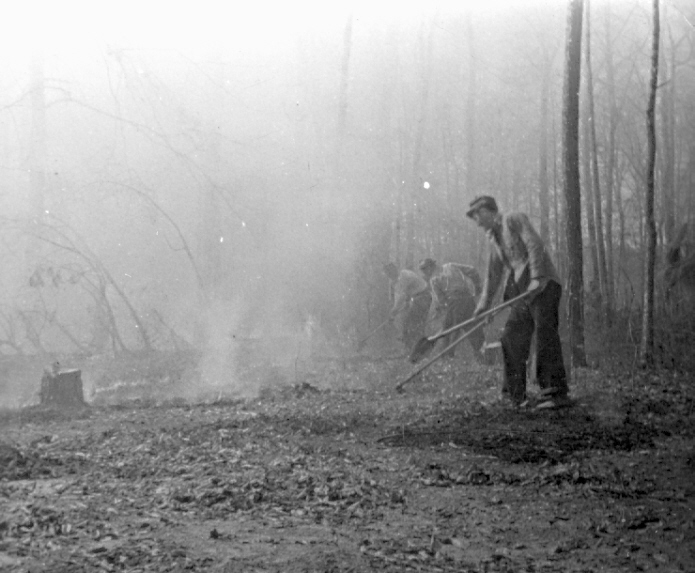 CPS Camp # 7, Magnolia, ArkansasFighting woods fire.Digital Image © 2011 Brethren Historical Library and Archives. All Rights Reserved.
CPS Camp # 7, Magnolia, ArkansasFighting woods fire.Digital Image © 2011 Brethren Historical Library and Archives. All Rights Reserved. -
 CPS Camp # 7Magnolia, Arkansas.Digital Image © 2011 Brethren Historical Library and Archives. All Rights Reserved.
CPS Camp # 7Magnolia, Arkansas.Digital Image © 2011 Brethren Historical Library and Archives. All Rights Reserved. -
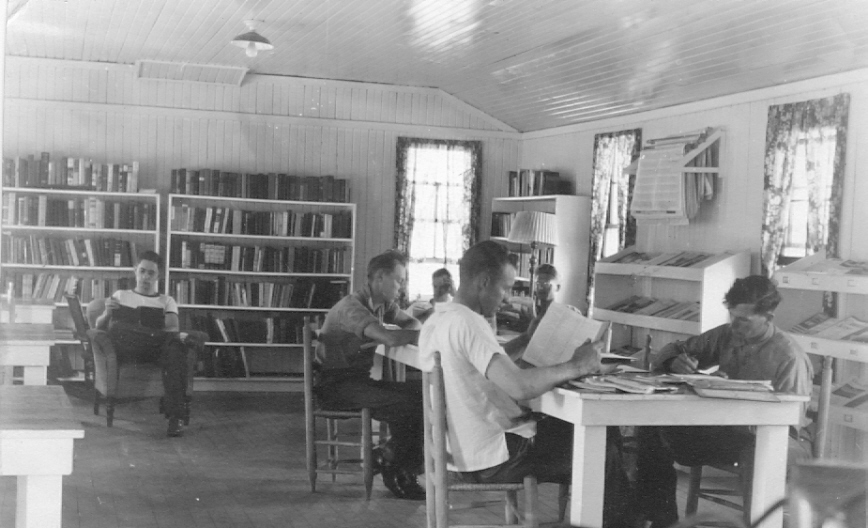 CPS Camp # 7, Magnolia, ArkansasCamp Library.Digital Image © 2011 Brethren Historical Library and Archives. All Rights Reserved.
CPS Camp # 7, Magnolia, ArkansasCamp Library.Digital Image © 2011 Brethren Historical Library and Archives. All Rights Reserved. -
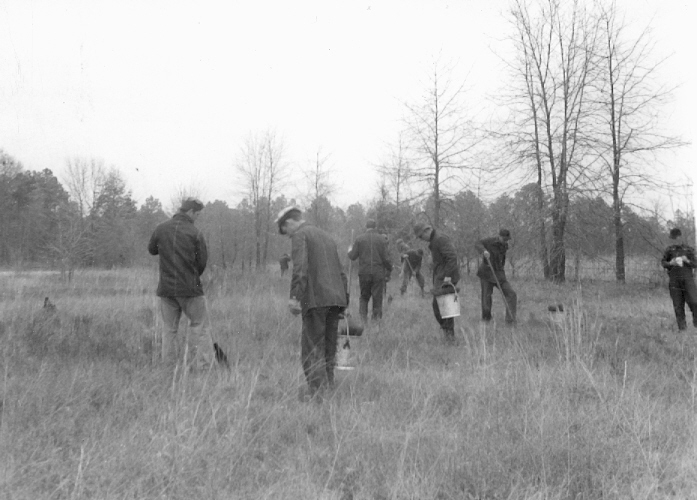 CPS Camp # 7, Magnolia, ArkansasPlanting pine trees.Digital Image © 2011 Brethren Historical Library and Archives. All Rights Reserved.
CPS Camp # 7, Magnolia, ArkansasPlanting pine trees.Digital Image © 2011 Brethren Historical Library and Archives. All Rights Reserved. -
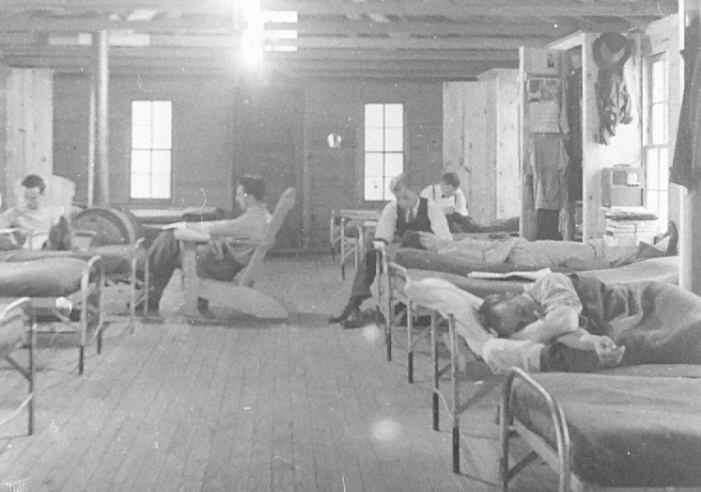 CPS Camp # 7, Magnolia, ArkansasTypical cabin scene on Sunday afternoon.Digital Image © 2011 Brethren Historical Library and Archives. All Rights Reserved.
CPS Camp # 7, Magnolia, ArkansasTypical cabin scene on Sunday afternoon.Digital Image © 2011 Brethren Historical Library and Archives. All Rights Reserved. -
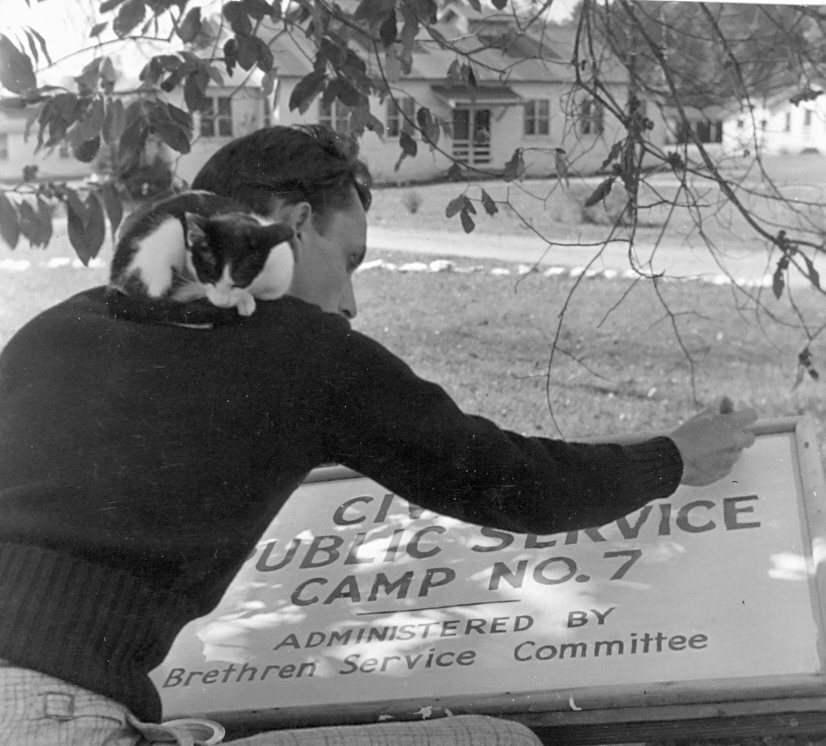 CPS Camp # 7Magnolia, Arkansas.Digital Image © 2011 Brethren Historical Library and Archives. All Rights Reserved.
CPS Camp # 7Magnolia, Arkansas.Digital Image © 2011 Brethren Historical Library and Archives. All Rights Reserved.
-
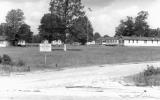
-
 October 1, 1942
October 1, 1942 -
 October 1, 1942
October 1, 1942 -
 October 1, 1942
October 1, 1942 -
 October 1, 1942
October 1, 1942 -
 October 1, 1942
October 1, 1942 -

-

-
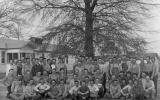
-

-

-
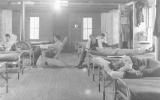
-
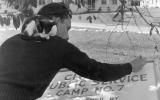
CPS Camp No. 7, a Soil Conservation Service base camp operated by The Brethren Service Committee, opened in Magnolia, Arkansas in June 1941 and closed in November 1944. Men terraced land, constructed channels for runoff water, and performed other soil conservation work.
Directors: J. H. Mathis, Ora Huston, Carl Throop
The men in most Brethren camps tended to report upon entry into CPS affiliation with a mix of Church of the Brethren and other denominations.
On average, men in Brethren camps reported 12.22 years of education upon entry into CPS. Twelve percent of men in Brethren camps reported their occupation when entering CPS as students; twenty nine percent as farmers or other agricultural workers; eighteen percent as technical or professional work; sixteen percent as business management, sales and public administration; twenty one percent as skilled and semi-skilled trades; and four percent as factory and other work. (Sibley and Jacob pp. 171-72)
At this Brethren base camp, the daily round of assignments included: “terracing, channel construction and sodding, meadow clearing, stock-pond construction, spring development, fence building, road construction and improvement, sodding of gullies, tree planting, contour cultivation, controlled grazing, cover-crop planting, land cleaning and grubbing, and a few additional related tasks.” (Eisan pp. 89-90) The men in this camp were also called upon for firefighting.
CPS founders envisioned that the non-work portion of CPS camp life would provide the men a unique opportunity to promote ways of living peace. Men could grow individually not only in an educational program, but also in community living. Leaders also envisioned that men would prepare for service of foreign post war reconstruction and also as leaders in the church.
Eisan describes the educational program at Magnolia as “dynamic, broad in emphasis, and aimed at meeting all camper needs”. (p. 128) It included classroom activities, invited speakers in a variety of fields, interest groups, panel discussions and forums. Men were encouraged to continue their varied interests in the arts and other areas.
The men published a camp newspaper Peace Pathways. An earlier newspaper was called The Peace Sentinel. They also produced Magnolia Time Peace, the first issues in November 1941 and continuing through February 1942.
Magnolia campers knew that not all in the area surrounding this camp in the South appreciated having COs in their midst. They had experienced unfavorable reactions while working in the fields or when in town. The project superintendent also cautioned the men about customs of address in the South. Particularly, he advised that men would not be appreciated for addressing Blacks as Mr. or Mrs. One assignee, William Stafford, recorded a Sunday afternoon experience in McNeil, a town within hiking distance of the camp.
One of the assignees at Magnolia, Morris T. Keeton, later served as National Education Director for Brethren CPS for most of the war. Keeton had just earned the Ph.D. in philosophy from Harvard. When Keeton arrived he bunked next to William Stafford. Stafford recalls that one of the country boys came up to Keeton the first night and asked where he was from. Keeton answered, “Harvard.” The country boy then asked, “What have you been doing there?” Keeton replied, “I’ve been studying for my Ph.D.,” and the country boy replied, “You ain’t never worked, have you?” After the war, Keeton had a distinguished academic career at Antioch College. Stafford taught at Lewis & Clark College in Portland, OR, and became one of the preeminent American poets of the last half of the 20th Century.
For more information on Camp Magnolia, see Guy Lancaster, "Camp Magnolia." Encyclopedia of Arkansas History & Culture. Accessed 07/15/2013.
For more information on work in Brethren camps see Leslie Eisan, Pathways of Peace: A History of the Civilian Public Service Program Administered by the Brethren Service Committee. Elgin, IL: Brethren Publishing House, 1948, Chapter 3 pp. 75-111; for camp life and educational activities see Chapter 4 pp 112-187.
For general information on CPS camps see Albert N. Keim, The CPS Story: An Illustrated History of Civilian Public Service. Intercourse, PA: Good Books 1990.
See also Mulford Q. Sibley and Philip E. Jacob, Conscription of Conscience: The American State and the Conscientious Objector, 1940-1947. Ithaca, NY: Cornell University Press, 1952.
See William Stafford, “The Mob Scene at McNeil”, a chapter from Down in My Heart: Peace Witness in Wartime by William Stafford, as reprinted in Every War Has Two Losers: William Stafford on Peace and War, edited and with an introduction by Kim Stafford, Minneapolis, MN: Milkweed Editions, 2003, pp. 13-23.
William Stafford’s recollections of his CPS experience and the Morris Keeton Story can be found in Heather T. Frazer and John O’Sullivan, eds., We Have Just Begun to Not Fight: An Oral History of Conscientious Objectors in Civilian Public Service During World War II. New York: Twayne Publishers, 1996.
Swarthmore College Peace Collection, Camp periodicals database.